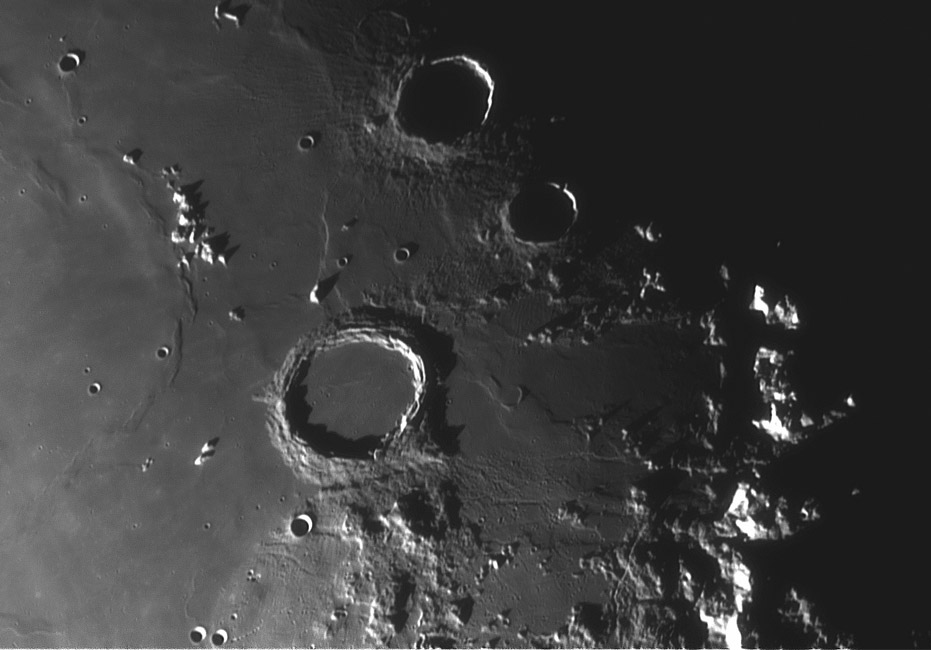April 8, 2013
Unlikely Movement

image by André Gabriël, Belgium
It's not April 1 but an outrageous idea comes to mind when viewing André's dramatic image of the sunset illumination of the Apennine Front peaks. The elongated patch of mare that is Palus Putredinis is an oddity - to the south is the rugged mass of collapsed Apennine peaks known as the Archimedes Mountains, and a stringer of apparently similar material marks the north side of the Palus, but there is no such material east of Archimedes. Doesn't it look like Archimedes slid down from a position closer to the Apennines, opening up some a low-lying and presumably fractured surface that later lavas covered? The Archimedes Mountains are evidence that masses of material did slide downslope towards the center of the basin. Now the Archimedes Mountains are scrunched up, presumably being deformed as they slid downslope, but the crater Archimedes maintains its pristine shape. Either this is evidence that it hasn't moved anywhere, or that the conditions of its movement were smoother. I could make up geological explanations for how that might have happened, but I just call on the same magical mechanism that may have allowed the Alpes to have moved a hundred km or so downslope without disintegration, as has been suggested.
Chuck Wood
Technical Details
Sept 8, 2012, 04-47-56.
Related Links
Rükl plate 22
21st Century Atlas charts 11 & 18.
Yesterday's LPOD: Death Moonrise
Tomorrow's LPOD: Spherical Pleasures
COMMENTS?
Register, Log in, and join in the comments.



